
MARCH-APRIL 07
QUARTERLY NEWSLETTER OF THE LANDSCAPE OBSERVATORY OF CATALONIA - 4
Presentation of the Landscape Catalogue of the Camp de Tarragona
A new collection of books on landscape takes shape
Landscape. The backbone of Empordà identity
Catalogue of Outstanding and Excellent Landscapes in the Autonomous Community of the Basque Country
Territory, Landscape and Identity Forum
The landscape charters of Catalonia
Urban Sprawl in Europe - The ignored challenge (EEA Report No 10/2006)
European Landscape Character Assessment Initiative (ELCAI)
Del paisaje reciente: de la imagen al territorio
Josep Pla: el temps, la gent i el paisatge. Una etnografia de l'Empordà franquejant la literatura
Fieldwork: Landscape Architecture Europe

An archaeologist's landscape
Graham Fairclough
Head of the agency's Historic Landscape Characterisation programme, English Heritage
Landscape draws on many ways of appreciation. For some, landscape is a question of beauty or of biodiversity. There are other ways of looking at it, however. With my archaeologist's perspective, I would say that a ‘good' landscape is an interesting one, one in which history remains ‘legible' so that the marks left by the work and lives of hundreds of generations of our predecessors can still be recognised.
MOSAIC
Presentation of the Landscape Catalogue of the Camp de Tarragona
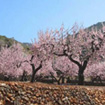
The Departament de Política Territorial i Obres Públiques de la Generalitat de Catalunya (the Ministry of Town and Country Planning and Public Works of the Government of Catalonia) presented the Camp de Tarragona (Catalonia, Spain) Landscape Catalogue on 22 February, in the presence of Minister Joaquim Nadal, in a ceremony organised by the Landscape Observatory of Catalonia, the Departament de Política Territorial i Obres Públiques and the Tarragona section of the Col·legi d'Arquitectes (College of Architects of Catalonia). The Departament de Política Territorial i Obres Públiques announced that the catalogue would be open to public information and comments in the following weeks. The whole content of the landscape catalogue will be able to be consulted in the Landscape Observatory web once the consultation process. The Landscape Observatory is also preparing the landscape catalogues of the Alt Pirineu and Aran, the Girona districts and Terres de l'Ebre, which will be finished at the end of 2007. And in a few months' time work will start on the catalogue of the Metropolitan Region of Barcelona and, in 2008, the focus will be on the central districts.
A new collection of books on landscape takes shape
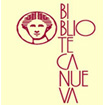
The publisher Biblioteca Nueva in Madrid has brought out a new collection entitled "Paisaje y Teoría" (Landscape and Theory). This is an ambitious project which intends to fill an important gap existing in the panorama of publishing in Spanish: that of the landscape theory in its broadest sense. The interest of this initiative will turn around three lines: a theoretical and methodological reflection on the concept of landscape from all possible disciplinary fields; the history of landscape as a tangible subject, also including the history of its mental, symbolic and artistic representations, among others; and, finally, the sources of landscape, understanding as such the classic and seminal texts written by landscape architects, painters, authors and scholars in the broadest sense, the majority of them unknown to the public. The collection will alternate, therefore, texts by contemporary authors with others by those of the past, as well as unpublished texts and translations. Within a few weeks three titles will be published simultaneously: La construcción social del paisaje (The social construction of landscape), coordinated by Joan Nogué, El arte del paisaje (The art of landscape), by Raffaele Milani, and Breve tratado de paisaje (Brief treatise on landscape), by Alain Roger.
Landscape. The backbone of Empordà identity
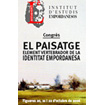
The congress held from 20 to 22 October 2006 in the Alt Empordà (Catalonia, Spain) was fundamentally structured on the basis of three pillars (natural environment, historical change and artistic creation). The congress days, under the generic title, Landscape. The backbone of Empordà identity, were developed with a structure of four commissioned papers and with contributions made by those attending each of them, arranged as round tables guided by a moderator. The theme of the congress stimulated a very good level of participation (more than 60 communications) and gave rise to lively debate, which enabled some conclusions to be drawn up which focused attention on the impossibility of accepting the rapid transformations taking place in the landscape, since it could cease to be one of the intrinsic elements of identity of this area.
Catalogue of Outstanding and Excellent Landscapes in the Autonomous Community of the Basque Country
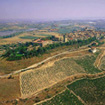
The Departamento de Medio Ambiente y Ordenación del Territorio (Basque Government Ministry of Environment and Town and Country Planning) has published the pre-project of the Catalogue of Outstanding and Excellent Landscapes of the Basque Country. This initiative fits in among other actions directed to integrating the principles of the European Landscape Convention into the territorial and sectorial ordination of the Basque Country, and its objective is to recognise the special values of a series of landscapes and promote their preservation. The work of preparing the Catalogue began with an evaluation of landscape quality throughout the area, based on the public's perception of it, then proceeding to catalogue those parts with more outstanding qualities. To consult the full report on the work, including a broad explanation of the methodology applied, abundant cartography and tables of data, click here.
Territory, Landscape and Identity Forum
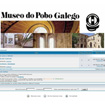
During January, the Instituto de Estudos das Identidades of the Museo do Pobo Galego held a network forum on Territory, Landscape and Identity, in order to debate the traditional view of the territory and the landscape and the transformations which are taking place and affecting its physical reality and its social perception. Starting from the growing sensitivity to the environmental problem, the meeting proposed an assessment of the value of landscape and territory as constituent elements of that complex that we call identity, and suitable ways for their projection with a view to the future. The virtual forum, which was supported by Marcial Gondar, anthropologist, Federico Lopez Silvestre, professor of aesthetics, Joan Nogué, director of the Landscape Observatory of Catalonia and the economist Albino Prada, coordinated by the architect Xerardo Estévez, concluded with a personally attended session in which notice was taken of the unsustainable type of development requiring high costs in movement, energy resources and land use, and a town and country planning policy was called for which would value the landscape and environment as a common heritage.
The landscape charters of Catalonia
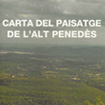
The landscape charters are instruments defining voluntary agreements reached among the agents in an area, in order to promote actions and strategies for evaluation of the landscape. Their objectives are made firm by the public signature of a charter, a programme setting out the commitments made by each of the signing parties and a timetable set for achievement of the objectives. In 2004 the Alt Penedès was the only district in Catalonia to have approved a Landscape Charter, and the Priorat district is currently in the process of doing so. At present, landscape charters are also being prepared by the municipalities of the Camprodon Valley, those of the Argentona river basin and the districts of Berguedà and the Alt Empordà. The landscape charters, initiated in 2006, promoted by local agents (municipality, groups of municipalities, district), have the support of the General Directorate of Architecture and Landscape of the Government of Catalonia (which has established a protocol for their preparation) and are monitored by the Landscape Observatory of Catalonia. In this context the Observatory will ensure that the landscape charters are coherent with the landscape catalogues in their field of action.
THE CHOICE
Urban Sprawl in Europe - The ignored challenge (EEA Report No 10/2006)
Report by the European Environment Agency (EEA) and the Office for the Official Publications of the European Communities (OOPEC) on the phenomena of urban sprawl in Europe its causes, its impact on the environment, the economy and society, and potential solutions.
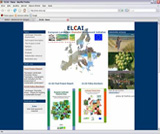
European Landscape Character Assessment Initiative (ELCAI)
Project coordinated by Alterra Wageningen which reviews the current state of work on the identification and evaluation of landscapes in Europe, seeking landscape indicators and trying to establish a classification of types of landscape in Europe.
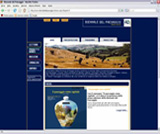
Initiative of the province of Reggio Emilia intended to introduce the need for the protection and management of the landscape in accordance with the principles of the European Landscape Convention. Five different facets of landscape are put forward: lectures, pictures, music, projects and products from the land.
Del paisaje reciente: de la imagen al territorio AAVV. Madrid: Museo Colecciones ICO, 2006. ISBN: 84-934684-2-2.
| |
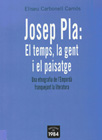 | Josep Pla: el temps, la gent i el paisatge. Una etnografia de l'Empordà franquejant la literatura Carbonell Camós, Eliseu. Barcelona: Edicions 1984, 2006. ISBN: 84-96061-67-1.
|
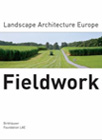 | Fieldwork: Landscape Architecture Europe Landscape Architecture Europe Foundation. Basel: Birkhäuser, 2006. ISBN: 3-7243-7508-6.
|
Publications can be found in the documentation centre of the Landscape Observatory. | |
AGENDA
LANDSCAPE IN THE PRESS
![]() Nota: This newsletter is an initiative of the Landscape Observatory. If you wish to subscribe and receive it by e-mail please click here.
Nota: This newsletter is an initiative of the Landscape Observatory. If you wish to subscribe and receive it by e-mail please click here.
© 2024 Observatori del Paisatge / Hospici, 8 - 17800 OLOT - Tel: +34 972 27 35 64
http://www.catpaisatge.net / observatori@catpaisatge.net